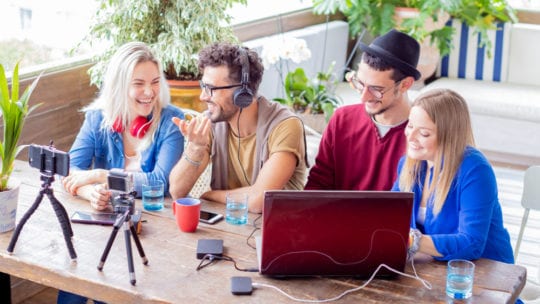
With millions of Americans out of work and spending 14 percent less than usual, it can be difficult to push forward with a consumer-oriented influencer campaign. But that doesn’t mean influencers are on hold. With the pandemic grinding some influencer-marketing verticals to a halt–think lifestyle, hospitality, and travel–influencers and marketers who work with them are pivoting.
While some companies are biding their time, there has been a strategic shift to utilize influencers in ways that are less traditional. Most notably, public service and educational campaigns increasingly are turning to influencer marketing.
In particular, local government, family services, public health and pharma are employing influencers. These sectors' use of influencers focusses on raising awareness as opposed to selling products. Their messages appear on social platforms seeking large, captive audiences that are spending more time online.
Influencer Marketing Overseas
In addition, foreign governments are utilizing influencers. For example, the UK Department for International Development announced an initiative with YouTube influencers to help spread accurate COVID-19 information. While there are many campaigns focused on stopping the spread, this one aims at teens and young adults, 54 percent of whom are spending more time online.
Similarly, Finland engaged with influencers on a COVID-19-related effort. Like the UK campaign, ensuring accurate information flow across social channels is Finland's goal.
Local governments in the US are jumping on board, pushing COVID-19 and vaping information. In addition, organizations in the family services sector are utilizing influencers to send traffic to online information pages and discussion boards. These entities want to encourage offline dialogue on mental health, peer pressure and child safety.
For these efforts, local micro-influencers (1K-10K followers) work well. They’re often found to be more relatable to audiences and are seen as regular, trustworthy people, not social media celebrities. Micro-influencers also are thought to have higher engagement rates than mega-celebrities, and at a fraction of the cost.
Best Practices
Prioritize engagement rates over follower counts: Not only is this important to get best value for your campaign, but it can stamp out fraud. The average engagement rate for an influencer post on Instagram is slightly more than 2 percent. If an influencer with 100,000 followers receives 50-100 comments, she likely bought followers or doesn’t know how to connect with her audience.
Evaluate platforms: Some work better than others. All platforms are not created equal. A campaign for a teenage audience likely will perform better on TikTok than Facebook. On the other hand, Facebook will work better when parents are the target. When building a campaign, choose platforms based on target audiences, viral features and the type of content you create.
Be flexible: The medium is the message. It is critical to stray outside rigid corporate messaging norms when promoting a cause or community resource.
As the world continues to adapt to the pandemic, so will traditional influencer marketing. A tiny silver lining is that several non-traditional verticals are expanding their creative repertoire with social media at this moment.
Sarah Ware is co-founder of Markerly
